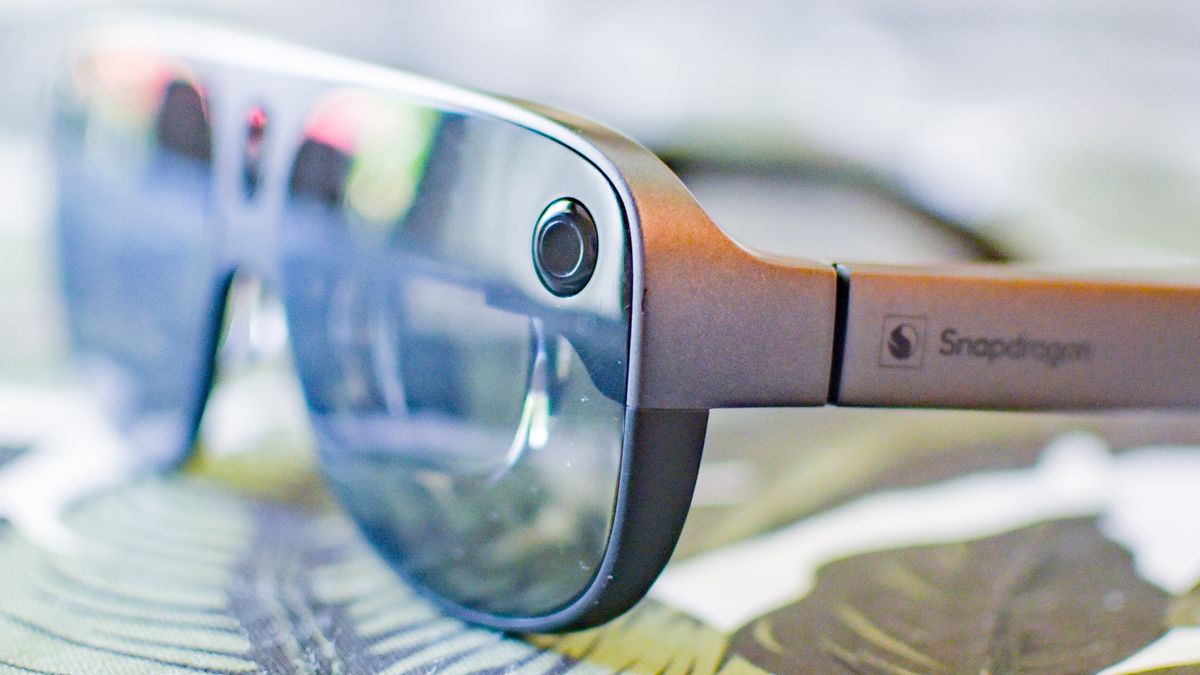Qualcomm, a leading technology company, is setting its sights on mixed reality. The company recently introduced its first augmented reality (AR) chip, the Snapdragon AR1 Gen 1, in the Meta Ray Ban Smart Glasses. However, this is just the beginning of Qualcomm’s mixed reality ambitions. Hugo Swart, Qualcomm’s VP of XR, provided an exclusive preview of the Snapdragon AR2 Gen 1 chipset’s first reference device. This chipset will enable exciting new products that push the boundaries of what we’ve seen so far.
During the Snapdragon Summit in Maui, Hawaii, Qualcomm showcased its XR chips, which power a blend of AR and virtual reality (VR) experiences. While the newly unveiled Snapdragon X Elite laptop chipset stole the spotlight, Qualcomm’s XR chips did not go unnoticed. The company has two chips for mixed reality – the AR1 and AR2 – which promise to deliver remarkable innovations that go beyond our current smartphones.
Qualcomm envisions a future where glasses replace smartphones as the next big thing. The company showcased its Snapdragon AR2 Gen 1 reference device and discussed the challenges of creating a face-mounted wearable. Although the Snapdragon AR2 Gen 1 offers true AR features, it does not yet propose to replace the smartphone entirely.
Qualcomm distinguishes between two categories of face-mounted wearables. The first category includes powerful computing tools, such as Apple’s Vision Pro headset, which will resemble larger glasses or goggles. These larger devices will provide highly immersive environments and accommodate advanced processing and components that require more power.
The second category comprises smaller wearables that resemble regular glasses. These devices will offer a field of view of approximately 100 degrees for projecting content and will appear transparent when necessary. They will be equipped with sensors, cameras, speakers, and other communication tools to interact with the user and the surrounding environment.
Qualcomm has a clear hardware vision for this future, but software remains a challenge. Therefore, the company maintains a platform-agnostic approach and aims to provide tools that various companies can use to develop their own spatial computing ecosystems. While Apple’s terminology of spatial computing resonates with Qualcomm’s vision, the company frequently uses the terms “mixed reality” or “XR” to encompass AR and VR technologies.
When discussing the obstacles in creating face-mounted wearables, Qualcomm acknowledges that display technology is the primary hurdle. Without significant improvements in display quality, achieving the desired immersive experiences will be difficult. However, Qualcomm has already made progress. The Snapdragon AR2 reference device offers a field of view of up to 45 degrees, but Qualcomm envisions a future of glasses with a 100-degree field of view, rendering additional screens obsolete.
Connectivity, processing power, and content availability are also identified as challenges for face-mounted wearables. Qualcomm believes it has addressed these challenges with upcoming generations of Snapdragon AR chipsets and the introduction of Wi-Fi 7. Battery life, however, is not a major concern, as Qualcomm designed the Snapdragon AR2 Gen 1 chipset to consume only 1 Watt of power or less. This low power requirement eliminates the need for bulky battery packs, making the device more lightweight and convenient.
While the dream of a perfect face-mounted wearable computer may eventually replace desktop and mobile devices, Qualcomm acknowledges that it is a long-term vision. Swart suggests that devices will continue to evolve, with distributed computing playing a more prominent role. In this future scenario, glasses may not have enough processing power, but smartphones or other devices could handle the computing tasks while glasses focus on displaying the content.
Although the Qualcomm Snapdragon AR2 Gen 1 reference device was not available for a hands-on experience, it is expected to offer movement tracking and the ability to project augmented reality onto its display. The current model provides a 45-degree field of view for AR features, but advancements and innovations are on the horizon.
As Qualcomm continues to push the boundaries of mixed reality and face-mounted wearables, the future of computing experiences promises to be even more immersive, seamless, and convenient.

I have over 10 years of experience in the cryptocurrency industry and I have been on the list of the top authors on LinkedIn for the past 5 years.

